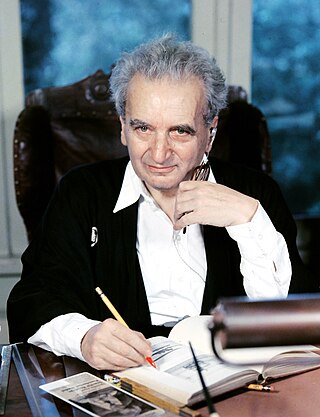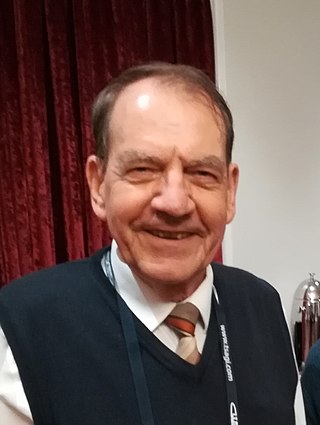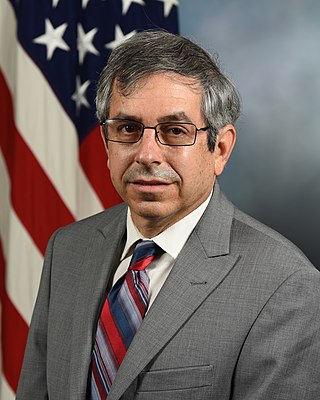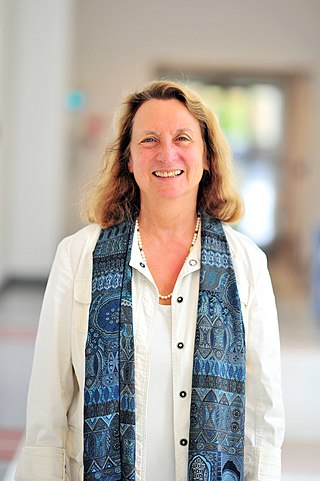Related Research Articles

Theodore von Kármán, was a Hungarian-American mathematician, aerospace engineer, and physicist who worked in aeronautics and astronautics. He was responsible for crucial advances in aerodynamics characterizing supersonic and hypersonic airflow. The human-defined threshold of outer space is named the "Kármán line" in recognition of his work. Kármán is regarded as an outstanding aerodynamic theoretician of the 20th century.
Jan Roskam was a Dutch-born American aircraft designer. He was the Deane E. Ackers Distinguished Professor of Aerospace Engineering at the University of Kansas. He was also the author of eleven books on airplane design and flight dynamics and over 160 papers on the topics of aircraft aerodynamics, performance, design and flight controls. He founded the company DARcorporation with Willem Anemaat.
Jerome Pearson was an American engineer and space scientist best known for his work on space elevators, including a lunar space elevator. He was president of STAR, Inc., and has developed aircraft and spacecraft technology for the United States Air Force, DARPA, and NASA. He held several patents and was the author of nearly 100 publications in aircraft, spacecraft, electrodynamic tethers, SETI, and global climate control.

Siva Subrahmanyam Banda is an Indian-American aerospace engineer. He is Director of the Control Science Center of Excellence and Chief Scientist for the Aerospace Systems Directorate at the United States Air Force Research Laboratory at Wright-Patterson Air Force Base. He has taught at Wright State University, the University of Dayton, and the Air Force Institute of Technology.

Hans G. Hornung is an emeritus C. L. "Kelly" Johnson Professor of Aeronautics and Director of the Guggenheim Aeronautical Laboratory of the California Institute of Technology (GALCIT). He received his bachelor (1960) and master (1962) degrees from the University of Melbourne and his Ph.D. degree (1965) in Aeronautics from Imperial College, London. He worked in the Aeronautical Research Laboratories, Melbourne, and in the Physics Department of the Australian National University (1967–1980), with a sabbatical year as a Humboldt Fellow in Darmstadt, Germany, 1974. In 1980 he accepted an offer to head the Institute for Experimental Fluid Mechanics of the DLR in Göttingen, Germany. He left Germany in 1987 to serve as the director of GALCIT. During his time at GALCIT he oversaw the construction of three large facilities: the T5 hypervelocity shock tunnel, the John Lucas Adaptive-Wall Wind Tunnel, and a supersonic Ludwieg tube.

The Purdue University School of Aeronautics and Astronautics is Purdue University's school of aerospace engineering contained within the Purdue University College of Engineering. The school offers B.S., M.S., and Ph.D. degrees in aeronautical and astronautical engineering. It also provides distance graduate education, including an online M.S. in Engineering with concentration in Aeronautics and Astronautics, and a distance Ph.D. Its main office and some of its labs are located in the Neil Armstrong Hall of Engineering. As of 2010, the School has awarded an estimated 6% of BS degrees and 7% of PhDs in aerospace engineering in the United States.
Frederick Stucky Billig was an American aerospace engineer who was a pioneer in the development of scramjet propulsion.

Ulfila Mark J. Lewis is a senior American aerospace and defense executive with special expertise in hypersonics. He is currently the Executive Director of the National Defense Industrial Association's Emerging Technologies Institute, following his role in the second half of 2020 as the acting US Deputy Under Secretary of Defense for Research and Engineering, and before that the Director of Defense Research and Engineering for Modernization. He was the Chief Scientist of the U.S. Air Force, Washington, D.C. from 2004 to 2008 and was the longest-serving Chief Scientist in Air Force history. He served as chief scientific adviser to the Chief of Staff and Secretary of the Air Force, and provided assessments on a wide range of scientific and technical issues affecting the Air Force mission. In this role he identified and analyzed technical issues and brought them to attention of Air Force leaders, and interacted with other Air Staff principals, operational commanders, combatant commands, acquisition, and science & technology communities to address cross-organizational technical issues and solutions. His primary areas of focus included energy, sustainment, long-range strike technologies, advanced propulsion systems, and workforce development.
John H. McMasters was an aeronautical engineer notable for his contributions to aerodynamics and engineering education.
William Rees Sears was an American aeronautical engineer and educator who worked at Caltech, Northrop Aircraft, Cornell University, and the University of Arizona. He was an editor of the Journal of the Aeronautical Sciences from 1955 to 1963 and the founding Editor of the Annual Review of Fluid Mechanics in 1969.

Elaine Surick Oran is an American physical scientist and is considered a world authority on numerical methods for large-scale simulation of physical systems. She has pioneered computational technology to solve complex reactive flow problems, unifying concepts from science, mathematics, engineering, and computer science in a new methodology. An incredibly diverse range of phenomena can be modeled and better understood using her techniques for numerical simulation of fluid flows, ranging from the tightly grouped movements of fish in Earth's oceans to the explosions of far-flung supernovae in space. Her work has contributed significantly to the advancement of the engineering profession.
Moriba Kemessia Jah CorrFRSE is an American space scientist and aerospace engineer who describes himself as a "space environmentalist", specializing in orbit determination and prediction, especially as related to space situational awareness and space traffic monitoring. He is currently an associate professor of Aerospace Engineering and Engineering Mechanics at the University of Texas at Austin. Jah previously worked as a spacecraft navigator at the NASA Jet Propulsion Laboratory, where he was a navigator for the Mars Global Surveyor, Mars Odyssey, Mars Express, Mars Exploration Rover, and his last mission was the Mars Reconnaissance Orbiter. He is a Fellow of the American Astronautical Society, the Air Force Research Laboratory, the International Association for the Advancement of Space Safety and, the Royal Astronomical Society. Jah was also selected into the 10th anniversary class of TED Fellows and was named a MacArthur Fellow in 2022. He also was selected into the AIAA class of Fellows and Honorary Fellows in the year of the 50th Anniversary of Apollo 11. The AIAA "confers the distinction of Fellow upon individuals in recognition of their notable and valuable contributions to the arts, sciences or technology of aeronautics and astronautics."
Wendy A. Okolo is a Nigerian aerospace research engineer in the Intelligent Systems Division at NASA Ames Research Center. She is the first Black woman to obtain a Ph.D. degree in aerospace engineering from University of Texas at Arlington. She is also the Special Emphasis Programs Manager for Women at Ames.

Subrata Roy is an Indian-born American inventor, educator, and scientist known for his work in plasma-based flow control and plasma-based self-sterilizing technology. He is a professor of Mechanical and Aerospace Engineering at the University of Florida and the founding director of the Applied Physics Research Group at the University of Florida.

Ying Chu Lin (Susan) Wu was a Chinese-born American businesswoman and engineer in magnetohydrodynamics, aeronautics, and aerospace engineering.

Khanh Dai Pham is a Vietnamese-born American aerospace engineer. He is noted for his work in statistical optimal control theory, game-theoretic operations research of military satellite communications, space control autonomy, and space domain awareness and the government leadership in innovation ecosystem and coalition of government agencies, small business and industry. He is a Fellow of the Air Force Research Laboratory (AFRL), the National Academy of Inventors (NAI), the Institution of Engineering and Technology (IET), the Society of Photo-Optical Instrumentation Engineers (SPIE), the Royal Aeronautical Society (RAeS), the International Association for the Advancement of Space Safety (IAASS), and the Royal Astronomical Society (RAS). He is not only a Fellow of the Institute of Electrical and Electronics Engineers (IEEE), the American Astronautical Society (AAS), and the Asia-Pacific Artificial Intelligence Association (AAIA) but also an Associate Fellow of the American Institute of Aeronautics and Astronautics (AIAA) and the Royal Institute of Navigation (RIN).

Lyle Norman Long is an academic, and computational scientist. He is a Professor Emeritus of Computational Science, Mathematics, and Engineering at The Pennsylvania State University, and is most known for developing algorithms and software for mathematical models, including neural networks, and robotics. His research has been focused in the fields of computational science, computational neuroscience, cognitive robotics, parallel computing, and software engineering.

Marty Bradley is an American aerospace engineer who specializes in advanced propulsion, electric aircraft, and sustainable aviation. He is a fellow of the American Institute of Aeronautics and Astronautics (AIAA), an adjunct professor of aerospace and mechanical engineering practice at the University of Southern California (USC), and a sustainable aviation consultant.
Lana Murphy Couch (1941–2007) was an American aeronautical engineer who headed the National Aero-Space Plane program at the Langley Research Center of NASA.
Yolanda D. Jones King is a retired American laser scientist and defense engineer who worked for many years in the Air Force Research Laboratory. She is a Fellow of the AIAA, a regent of the New Mexico Institute of Mining and Technology and the wife of Gary King, the former attorney general of New Mexico.
References
- 1 2 3 4 "Ivett Leyva", Profiles, Texas A&M University Department of Aerospace Engineering, retrieved 2023-08-20
- 1 2 "Aeronautical Engineer Getting Project Ready for Liftoff", Los Angeles Business Journal, April 3, 2005, retrieved 2023-08-20
- ↑ "STEM & STEAM from Susan & Susan" (PDF), Woodbridge Wisdom, AAUW Woodbridge, VA Branch, pp. 6–7, October 2019, retrieved 2023-08-20
- 1 2 Alumna Profile: Ivett Leyva (BS '94, MS '95, PhD '99), Caltech, October 4, 2022, retrieved 2023-08-20
- ↑ "Ivett Leyva: An Experimentalist with International Flair" (PDF), Alumni profiles, ENGenious, Caltech, Winter 2003, retrieved 2023-08-20
- ↑ Walker, Felysha (June 10, 2021), "Leyva appointed head of Department of Aerospace Engineering", News, Texas A&M University Engineering, retrieved 2023-08-20
- ↑ AIAA Fellow roster (PDF), AIAA, 2023, retrieved 2023-08-20